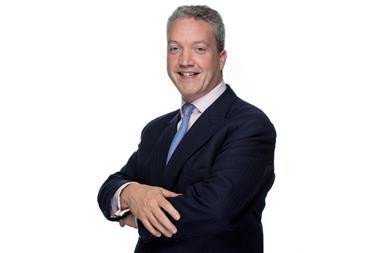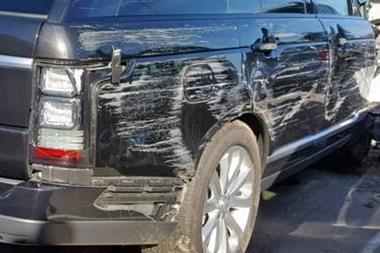Loss adjusters cannot guarantee to survive nuclear explosions, but they will now have a role in rescue and recovery operations for any other civil emergency including terrorist attack. Katie Puckett finds out how three years of dwelling on disaster made this possible
A MAJOR UK CITY on an unknown date in the not-too-distant future. The city is in a state of high alert. A terrorist bomb has exploded, causing mass panic, loss of life, devastation to property and possible contamination of air and water supplies. Normal chains of command are suspended.
In overall strategic control is Gold Command, an emergency group of police and rescue services which will coordinate the response and recovery efforts. The clean-up may only be in the very early stages, but the insurance industry will play a vital role in helping the city start working, trading and living again.
A horde of claims is inevitable and in previous emergencies adjusters might have been refused access. But following agreement between the industry, government and emergency services, they’ll likely be among the first on the scene in future recovery operations.
Insurance Times visited the offices of the Chartered Institute of Loss Adjusters (Cila) to find out how the system for responding to disaster is being managed. Thankfully, the simulation wasn’t during real conditions.
But Graham Cave, the institute’s executive director, and Angus Tucker, its president, revealed that despite Cila’s quiet existence on a City side street, it’s on the front line in national emergencies.
It’s partly down to Cave’s efforts that the profession’s role in an emergency is now recognised at the highest levels. As Tucker says: “It’s the loss adjuster’s professional role to be on site as soon as possible.”
As London reeled from the transport bombings in July 2005, sites were sealed off with police cordons.
For insurers, it was crucial to know exactly where the cordons were – and therefore which business interruption policyholders were genuinely blocked from their premises.
“You couldn’t find out by calling the police,” says Cave. “They couldn’t tell you, as [the cordons] were moving all the time. So in the end it was down to a loss adjuster going round on a bike finding out.” The loss adjuster reported back to Cila, which passed the findings on to the industry via the ABI.
On the Cila website, there’s a discreet orange link to “CBRN Protocol”. The link doesn’t quite match the rest of the site, but the casual reader could easily pass over it or assume that a programmer had mistyped a piece of code.
In the event of a major civil emergency, however, the officers in Gold Command will go straight to this link. Within one click, they’ll find a list of phone numbers of key insurance industry representatives to be contacted in the case of chemical, biological, radiological and nuclear attack.
Cave admits, however, that CBRN Protocol will really only function in the case of the first three scenarios. “Forget nuclear – that’s doomsday. If there’s a nuclear attack, we aren’t going to be here.”
The protocol is the result of about three years spent contemplating the worst by Cave, his peers in other industry bodies and senior officials in the emergency services and government.
The need to include adjusters in such a system was first raised at a claims forum by a Cila member, prompting Cave to convene a wider industry group. The initiative won the approval of the Civil Contingencies Secretariat within the Cabinet Office, a body whose generic title underplays its daily work in assessing any sort of catastrophe that could strike the country.
In September 2007, the ABI and Cila signed the first document alongside the Association of Chief Police Officers, the Air Accidents Investigation Branch, the Chief Fire Officers’ Association and the Local Government Association. The protocol remains in place.
“When there is such an occurrence, we will be in front with the top brass in the recovery group,” Cave says. “We will know what’s going on and they will know we’re available.”
Under the terms of the protocol, should the UK be attacked, Gold Command will contact a senior representative from the insurance industry, who will pass the information on. Each representative has a list of essential questions, so that they can build up a picture of the incident as rapidly as possible.
“The guy at the end will be really busy, not wanting a general chat. So this will bring out in seven or eight questions the extent of the problem, the anticipated extent of the damage, the human injury,” explains Tucker.
It is partly the changing nature of the terrorist threat to Britain that has made the protocol so necessary, he says. “When the IRA bombers moved over from Northern Ireland to the mainland [in the early 1970s], they targeted structures but they gave plenty of warning before they blew them up. In some ways it was no different to a gas explosion.”
Terrorism was exempt from insurance policies for a period until the Pool Re scheme was set up in 1993, under which insurers and the government agreed to jointly underwrite losses. But the different approach taken in more recent terrorist attacks make the outcomes harder to predict.
“With Muslim fundamentalists, they’re not attacking property; they’re targeting human life with no warning. They want the maximum loss of life,” Tucker says.
The aftermath of chemical, biological or radiological attack (from a dirty bomb) would be much more chaotic, says Tucker, and exclusion zones much bigger.
While many financial institutions used to have back-up offices ready to move to Docklands if the City was bombed, Tucker points out that after a dirty bomb, a toxic cloud from the City would blow straight down the Thames in that direction.
When the call from Gold Command comes in, a loss adjuster will report to the scene, where officers will be expecting them. This is crucial, says Tucker, as modern forensic examination techniques mean disaster sites are tightly sealed and restricted.
“Our guy has to bowl up to Gold Command. If they haven’t got a clue who he is, they’ll tell him to go away. Normally no one would have access to the site, that’s been made very clear. This way, they understand that there is a major industry requirement for somebody to get onsite to identify potential damage and the timescale for recovery. Otherwise, insurers wouldn’t be able to get anything for a week.”
Under the terms of the protocol, a maximum of two loss adjusters will be given an accompanied tour of the emergency site and and feed back information via Cila to the ABI and Lloyd’s.
When compiling its contacts list, Cila called for volunteers from its membership who could be instantly available in the event of an emergency.
Cave says it has between 20 and 30 experienced loss adjusters, spread across its nine regions. “They need to be senior people, the same sort of people that would be responding if their company were engaged on a major fire. In a lot of ways for the person on the ground, it’s no different to a major and complex loss for their company.”
Responding to disasters is, after all, all in a day’s work for a loss adjuster. Both Tucker and Cave are used to responding to phone calls at all hours of the day and night. “The service a loss adjuster provides is 24 hours a day, 365 days a year,” says Tucker. “Our members are geared up for that sort of response. They’ve all got a mac and a pair of wellies in the boot, and a fluorescent jacket, a hard hat, gloves, boots.”
There’s something a little surreal about sitting in Cila’s ordinary City offices discussing the possibility of a large-scale terrorist attack in such a matter of fact way.
Having spent so much time with the Civil Contingencies team, how worried are Cave and Tucker that the protocol will have to be used?
“Our guess is as good as yours,” says Cave. “We’re not waiting for it to happen, but the industry is in a state of preparedness. Whenever you discuss it with the government and security forces, they always refer to ‘when’ – not ‘if’.”




































No comments yet